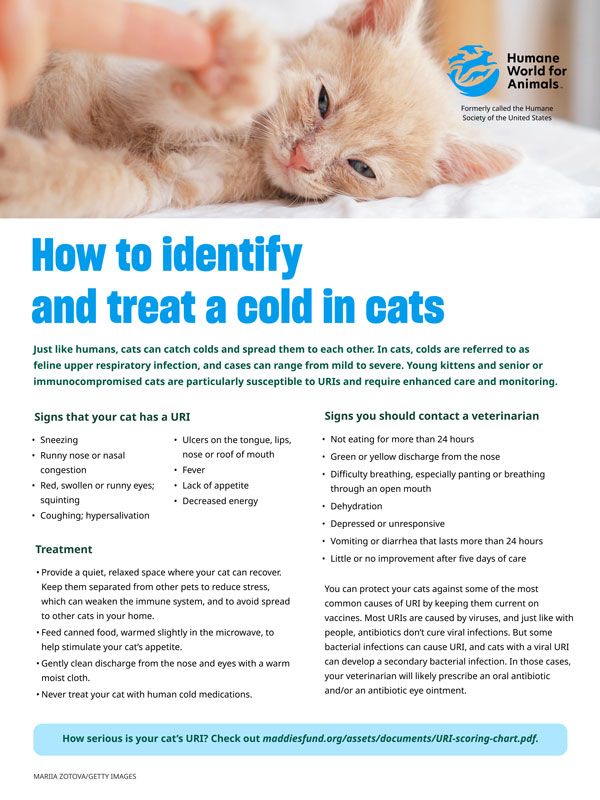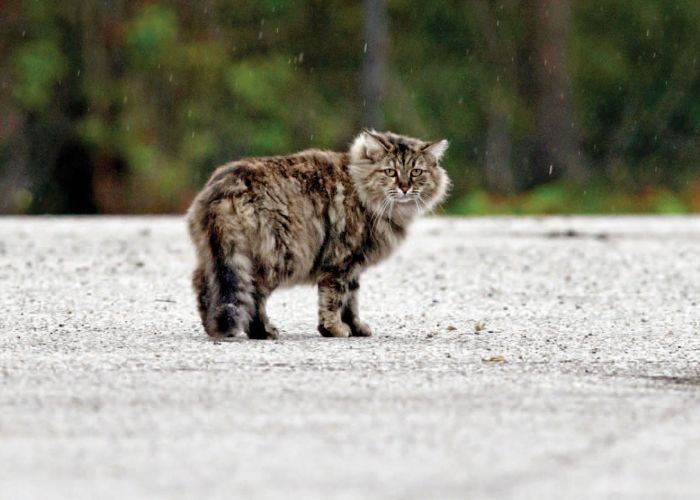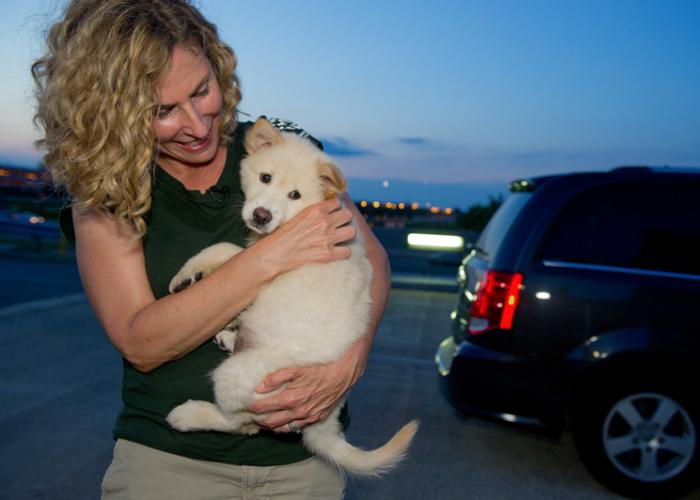Adopter handout: Colds in cats
Download our adopter handout on how to identify and treat a cold in cats

Just like humans, cats can catch colds and spread them to each other. In cats, colds are referred to as feline upper respiratory infection, and cases can range from mild to severe. Young kittens and senior or immunocompromised cats are particularly susceptible to URIs and require enhanced care and monitoring.
Signs that your cat has a URI
- Sneezing
- Runny nose or nasal congestion
- Red, swollen or runny eyes; squinting
- Coughing; hypersalivation
- Ulcers on the tongue, lips, nose or roof of mouth
- Fever
- Lack of appetite
- Decreased energy
Treatment
- Provide a quiet, relaxed space where your cat can recover. Keep them separated from other pets to reduce stress, which can weaken the immune system, and to avoid spread to other cats in your home.
- Feed canned food, warmed slightly in the microwave, to help stimulate your cat’s appetite.
- Gently clean discharge from the nose and eyes with a warm moist cloth.
- Never treat your cat with human cold medications.
Signs you should contact a veterinarian
- Not eating for more than 24 hours
- Green or yellow discharge from the nose
- Difficulty breathing, especially panting or breathing through an open mouth
- Dehydration
- Depressed or unresponsive
- Vomiting or diarrhea that lasts more than 24 hours
- Little or no improvement after five days of care
You can protect your cats against some of the most common causes of URI by keeping them current on vaccines. Most URIs are caused by viruses, and just like with people, antibiotics don’t cure viral infections. But some bacterial infections can cause URI, and cats with a viral URI can develop a secondary bacterial infection. In those cases, your veterinarian will likely prescribe an oral antibiotic and/or an antibiotic eye ointment.
Document








